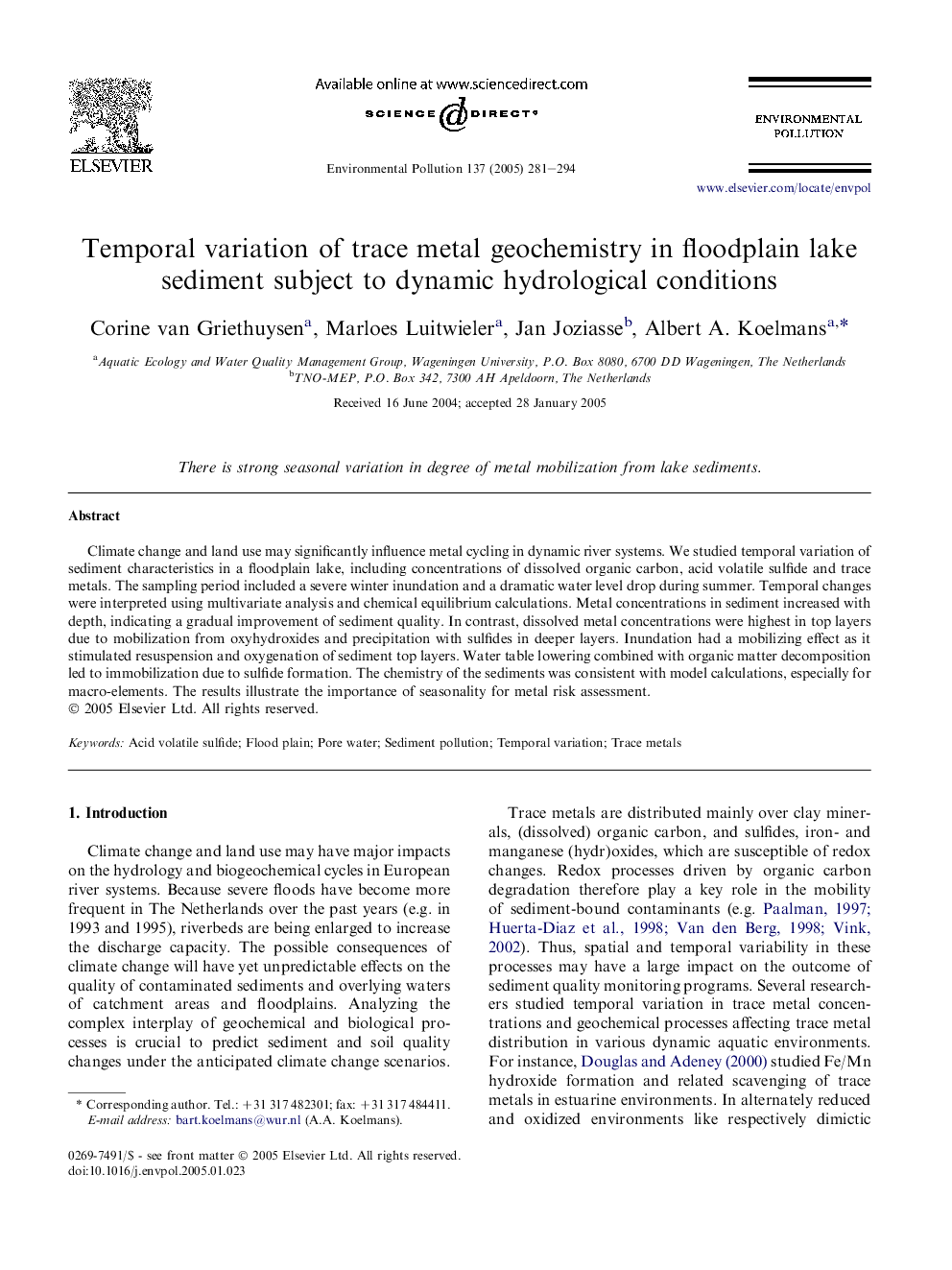| Article ID | Journal | Published Year | Pages | File Type |
|---|---|---|---|---|
| 9456205 | Environmental Pollution | 2005 | 14 Pages |
Abstract
Climate change and land use may significantly influence metal cycling in dynamic river systems. We studied temporal variation of sediment characteristics in a floodplain lake, including concentrations of dissolved organic carbon, acid volatile sulfide and trace metals. The sampling period included a severe winter inundation and a dramatic water level drop during summer. Temporal changes were interpreted using multivariate analysis and chemical equilibrium calculations. Metal concentrations in sediment increased with depth, indicating a gradual improvement of sediment quality. In contrast, dissolved metal concentrations were highest in top layers due to mobilization from oxyhydroxides and precipitation with sulfides in deeper layers. Inundation had a mobilizing effect as it stimulated resuspension and oxygenation of sediment top layers. Water table lowering combined with organic matter decomposition led to immobilization due to sulfide formation. The chemistry of the sediments was consistent with model calculations, especially for macro-elements. The results illustrate the importance of seasonality for metal risk assessment.
Related Topics
Life Sciences
Environmental Science
Environmental Chemistry
Authors
Corine van Griethuysen, Marloes Luitwieler, Jan Joziasse, Albert A. Koelmans,
